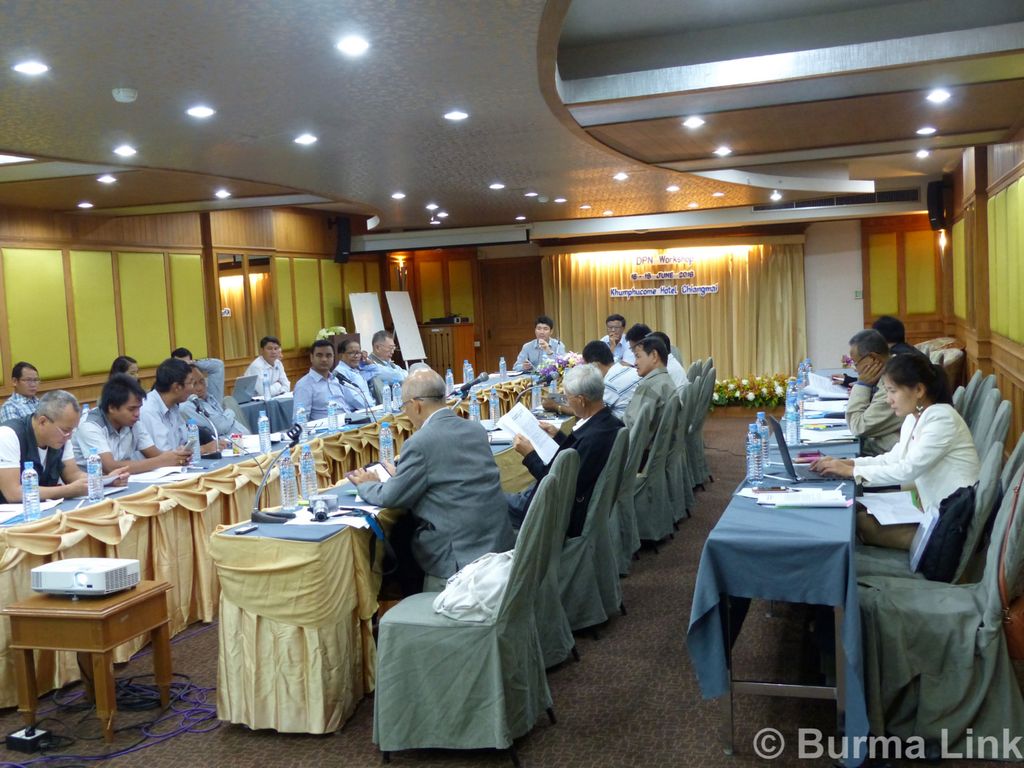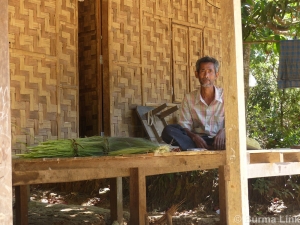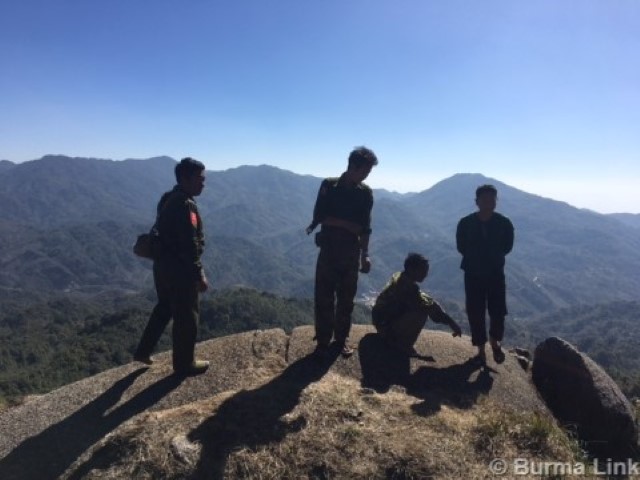The 2015 Election general facts
Of Burma’s 34.3 million eligible voters, 70% turned out for the 2015 election for the House of Nationalities and House of Representatives. This is a decrease from 2010 when 77% of eligible voters participated in the election (see Election Guide).
The Burmese Union parliament is composed of 664 parliament members, with 224 in the Upper House and 440 in the Lower House.
The National League for Democracy (NLD) led by Daw Aung San Suu Kyi was formed in the aftermath of the 8888 Uprising in 1988. In the 2015 elections the NLD won approximately 80% of the 75% of seats not reserved for the military. In this election, the NLD became a major party in the Union Parliament as well as almost every regional and state parliament (Congressional Research Service, March, 2016). At the same time, ethnic political parties achieved a modest number of seats. Analysis on the election has suggested that the NLD’s significant victory was an expression of citizens’ hatred of the existing quasi-civilian regime. One often cited example used to illustrate the degree to which this is true is that one NLD candidate won the election despite passing away two days before the election (Withnall, November, 2015).
U Htin Kyaw, supported by the NLD, was elected the first civilian President of Burma in March 2016. President Htin Kyaw is widely recognized as a close ally of NLD leader Daw Aung San Suu Kyi, who was unable to become president due to constitutional Article 59(f), which states that: “the president shall he himself, one of the parents, the spouse, one of the legitimate children or their spouses not owe allegiance to a foreign power, not be subject of a foreign power or citizen of a foreign country. They shall not be persons entitled to enjoy the rights and privileges of a subject of a foreign government or citizen of a foreign country.” The clause is widely considered to have been written to bar Daw Suu from presidency.
However, she is recognized as a significant power in government, and was appointed Minister of Foreign Affairs, Minister of the President’s Office and State Counsellor, the latter position created for her as she was unable to assume presidency. Daw Suu is now widely considered the de facto leader of the country (Aljazeera, March 2016). According to BBC News, U Htin Kyaw stated “it is Aung San Suu Kyi’s victory,” following the election (BBC News, March, 2016).
However, it should be noted that the 2015 election came with its own share of voting issues prior to NLD’s win. To begin with, data from the Human Rights Foundation of Monland (HURFOM) shows the disenfranchisement of certain Mon and Karen peoples in the southeast. This includes the cancellation of polling centers across 38 villages due to alleged security concerns, preventing 50,000 people from submitting their votes, although these were in non-state armed group areas that were peaceful at the time. Additionally, the location of distant polling locations prevented more than 3,000 residents from travelling, making it difficult for the elderly or impoverished to cast a ballot. Finally, when a survey was taken of three bordering IDP camps, it was found that not a single resident had accessed voter education. These challenges, when combined, would have made it difficult to further the participation of ethnic voters in the 2015 election (HURFOM, November, 2015). This is just one example of disenfranchisement within specific groups, but a conservative estimation by the Burma Campaign UK (BCUK) reports that 10 million people, including migrants, monks, nuns, IDPs, and ethnic groups were not able to participate in the election, for a variety of reasons ranging from security to not being registered on voter lists (BCUK, October, 2015).
In addition, a diversity of problems existed during the initial registration and campaigning period. The Union Election Commission attempted to ban Muslim candidates and also selectively applied election laws and guidelines to where they saw fit. One example of this can be seen in the $280 deposit required for a candidate, which could only be paid for by big political parties like the NLD or the USDP, placing a financial restraint on other parties, as well as ethnic parties to fund their candidates (BCUK, October, 2015).
With the possibility of the NLD winning the election, the USDP turned to Buddhist nationalism to provide support for their party. Through their outright advocacy of the Ma Ba Tha, the Buddhist nationalist group, they passed four “race and religion laws” that discriminate against women and ethnics. One example of these laws includes the Religious Conversion Bill, which requires anyone wanting to convert to a different faith to apply through a state governed body. Through the passage of these laws and their support of Buddhism nationalism, they hoped to increase their popularity ahead of the NLD’s (Amnesty International, March, 2015)
As the NLD government has come to power, it has had to contend with a wide range of ongoing problems. These include the ongoing armed conflicts mostly between the Burma Army and Ethnic Armed Organizations (EAOs) and at times between different ethnic groups; ethnic and religious tensions; large internally displaced person (IDP) populations, and refugees; the question of refugee repatriation; a poor economy; and struggling education and health systems (Congressional Research Service, March, 2016).
Even with NLD’s landslide victory in the elections, the military retains ultimate power. For example, 25% of parliamentary seats are reserved for the military, and order to carry out constitutional changes, 75% of votes are required, giving the military veto over any constitutional changes.
The 2008 Constitution
Despite the freest election for decades held in 2015, critical political issues remain unresolved. Chief among them is the 2008 Constitution, which provides the military with extensive parliamentary and governmental power. This Constitution gives the military control over three key ministries: Ministry of Defense, Home Affairs, and Border Affairs.
Article 141 of the 2008 Constitution stipulates:
“[T]he Amyotha Hluttaw (The House of Nationalities, the upper house the bicameral legislature of Burma / Myanmar) shall be formed with a maximum of 224 Hluttaw representatives as follows […] (b) 56 Amyotha Hluttaw representatives who are the Defence Services personnel nominated by the Commander-in-Chief of the Defence Services in accord with the law, four representatives from each Region or State inclusive of relevant Union territories; […]”
The reservation of 25% of the Union, Region and State parliaments for the military is enshrined clearly. Moreover, article 436 states
“[I]f it is necessary to amend the provisions of Sections […] it shall be amended with the prior approval of more than seventy-five percent of all the representatives of the Pyidaungsu Hluttaw, after which in a nation-wide referendum only with the votes of more than half of those who are eligible to vote”.
As the Constitution requires a 75% approval from all Parliamentarians in order to pass a motion, the Military at 25% guaranteed seats effectively has veto power. The Constitution also guarantees the military the power to take control of civilian administration from the national level through the National Defense and Security Council down to the local ward and village level through the General Administration Department (GAD). As such, the military effectively controls national affairs including constitutional amendments and peace processes (Burma Partnership & Asia Forum for Human Rights and Development, March, 2016).
As a result of military dominance in Burma’s political system, impunity remains deeply entrenched in key institutions and structures of governance, allowing the Burma Army, the main perpetrators of pervasive human rights abuses and forced displacement for decades, to continue to wield far-reaching power (Burma Partnership et. al., March 2016).
Concerns regarding military control of Parliament have shown to be valid. In June 2015, the military party refused a bill that would enable Parliament to vote for a constitutional amendment with 70%, instead of 75% approval; a move that could have reduced the military’s veto power (BBC News (Jun, 2015).
Ethnic Perspectives on the Election
Throughout the election process armed conflict continued unabated. Even as votes were counted following the “free and fair” 2015 election, the Burma Army launched aerial strikes in the Shan State (Saw Yan Naing & Nang Seng Nom, November, 2015).
Prior to the 2015 election, the Burma Government initiated a so-called ‘Nationwide’ Ceasefire Agreement (NCA) with a number of EAOs (NCA, further information, see Naw Zipporah Sein, January, 2016). Following the introduction of the NCA, armed conflict escalated in several ethnic areas, particularly Kachin and Shan States. A report by Kachin Women’s Association Thailand (KWAT), for instance, indicates that there has been no improvement in the armed conflict and that Burma Army offensives have escalated (KWAT, 2016).
Armed conflict continues between the Burma Army and EAOs, with frequent, sometimes daily, clashes occurring between the Burma Army and the Kachin Independence Army (KIA), Shan State Progress Party/Shan State Army (SSPP/SSA), Arakan Army (AA), Myanmar National Democratic Alliance Army (MNDAA), Democratic Karen Buddhist Army (DKBA), and Palaung State Liberation Front/Ta’ang National Liberation Army (PSLF/TNLA). The NCA was introduced by the Burma Government, and has had some EAO signatories, however the exclusion of some groups and mistrust among EAOs of the Burma Army have resulted in drawn-out negotiations and little agreement.
Since the NLD-led Government took office in April 2016, armed conflicts and displacement have increased and conflicts have been some of the fiercest in decades. Ethnic nationalities have also been dismayed by Daw Aung San Suu Kyi’s silence over Burma Army offensives and deliberate abuse of civilians especially in conflict zones. Daw Suu has also been silent about the military crackdown of Rohingya civilians in Arakan State that may amount to crimes against humanity (UN News Centre, February, 2017).
As well as the fragile and fractured peace process, and ongoing Burma Army offensives and impunity, one of the greatest challenges facing Burma is the number of refugees and IDPs. Following the armed conflict between the Burma army and EAOs, the most recent statistics indicate that there are approximately 100,000 refugees living in the Thailand-Burma border refugee camps (TBC, February, 2017) and over 400,000 internally displaced persons in southeast Burma alone (TBC, 2012c).
The EAO policy has traditionally been to defend, although a new strategy was employed by the Northern Alliance-Burma (NA-B) at the end of the year 2016, when the four ember groups (KIA, AA, TNLA, and MNDAA) attacked Burma Army positions, saying it was not possible for them to continue to retreat further in the jungle. After long months of silence over huge Burma Army offensives against EAOs, and despite loud calls by the civil society for Daw Suu Kyi to speak out, she was quick to respond only days after the EAO attacks took place, clearly showing her position as closer to the military than EAOs. Whilst many ethnic nationality civilians voted for the NLD with hopes of peace and justice, so far their hopes have been dashed by the unbearable silence of “The Lady.”
Following the 2015 election, apathy has set in in rural, primarily ethnic areas. This apathy is attributed to the fact that the current constitution leaves a great deal of power in the hands of the military, so many believe that change is not possible within the current political system.
According to one Chin civil society organization representative (Burma Partnership, 2015c, p. 38);
“We have giant parties like NLD, USDP, and NDF. For them their main discussion is on democracy and human rights, and political prisoners. However, for ethnic parties, democracy, yes it is important, human rights is important, so is political prisoners. But for ethnic parties, it is democracy without federalism, it is human rights without indigenous peoples’ rights, there are political prisoners but there is also the bondage of the people, captivity in their homeland, refugee issues, IDP issues, these kinds of issues are hardly addressed by majority [Burman] parties.”
This apathy has stemmed from lack of voter education, the inability to vote, doubt in the leading political parties and the Burma army based on previous history and the belief that in order to facilitate any real change the 2008 Constitution must be disposed (Burma Partnership, 2015c).
21st Century Panglong Conference
1947 Panglong Conference and the Panglong Agreement
The Panglong Conference of 1947 was part of the independence movement against British colonial rule. Shan, Kachin, and Chin ethnic leaders met with General Aung San with Karen leadership participating as observers. The conference resulted in the signing of the Panglong Agreement, which paved the way for Burma’s independence the following year and established the Union of Burma in its current form (Pangmu Shayi, July, 2016). The agreement was far from inclusive as Mon, Arakanese, Karenni, and other nationalities were not invited or elected not to participate. Still, it was the first attempt to lay a foundation for a federal union of Burma based upon the autonomy and equality of every ethnic nationality (Kanbawza Win, February, 2013). That same year, General Aung San and eight of his cabinet ministers were assassinated, coupled with the rapid withdrawal of the British from Burma, the result was that the agreement was never fully implemented. Since then, years of military dictatorship and continued conflict between the Burma Army and various EAOs have prevented the agreement from becoming fully realized.
 Members of the UNFC attending a workshop in Chiang Mai in June 2016. (Photo: Burma Link)
Members of the UNFC attending a workshop in Chiang Mai in June 2016. (Photo: Burma Link)
21st Century Panglong Peace Conference
Shortly after her release from house arrest in 210, Daw Aung San Suu Kyi, the daughter of General Aung San, declared, “A second Panglong conference addressing the concerns of the 21st century is needed for national reconciliation” (Kipgen, March, 2016). Following the 2015 election of the NLD government, Aung San Suu Kyi initiated the 21st Century Panglong Conference, aiming to bring the country’s ethnic groups together to build a path to a unified and peaceful nation.
950 representatives of government, the Burma Army, ethnic political parties and EAOs, civil society groups, and the United Nationalities Federal council, an alliance of seven EAOs who did not sign the NCA, attended the conference. Presentations focused on the need to decentralize the government, revise the 2008 constitution, need for greater ethnic equality, perceived security and defence priorities, sovereignty and the right to self-determination, and visions for a federal democratic Union (Ei Ei Toe Lwin, September, 2016).
The conference has been criticized in the media for failing to be inclusive by excluding three key EAOs: TNLA, MNDAA, and AA. Groups that had not signed the NCA and refused to lay down arms before the conference began and so were not invited to attend (Nan Lwin Hnin Pwint & Htet Naing Zaw, August, 2016). Further, the lack of representation by women’s and youth groups brings into question the value of a conference that does not include civil society.
Nine delegates from the United Wa State Army (UWSA) party walked out of the conference citing discrimination when they were mistakenly issued observe passes. Burma’s peace commission sent a letter of apology to the UWSA, whose move was publicly supported by the TNLA, AA and MNDAA (Radio Free Asia, September, 2016).
No formal resolutions emerged from the 21st Century Panglong Peace conference. However, the meeting is scheduled to occur every 6 months with a Framework for Political Dialogue to concluded before the start of the next conference (Mizzima, September, 2016). At present, only the EAOs who have signed the NCA will be able to participate. What exactly will be on the agenda for this regular dialogue and who will be participating is yet unknown.
The next 21CPC is set to begin on May 24, 2017.
Concerns Post 2015 Elections
Continued Fighting and Human Rights Abuses
Even in the weeks leading up to the first meeting of the 21st Century Panglong Conference, the Burma Army launched military offensives in civilian areas of Kachin and Shan States while committing further human rights abuses (Free Burma Rangers, August, 2016). Following the first meeting, Burma has witnessed its heaviest fighting in decades, with an increase of violent conflict between the Burma Army and KIA.
Decades of civil war and on-going conflict between non-Burman ethnic groups and the Burma Army (Tatmadaw) has jeopardized the peace process as it has resulted in distrust of the Burma Government on the part of the ethnic nationalities (Humanitarian Aid Relief Trust, August, 2016). As a reporter for Kachinland News put it:
When all is said and done, it is ultimately the Tatmadaw, which holds the key to national peace and reconciliation. Unless and until it withdraws from the national political arena, and from ethnic lands, and allows the current constitution to be amended, chanting the Panglong mantra as an invocation to ethnic unity will be a futile exercise. (Pangmu Shayi, July 2016).
International Community
The United States has lifted sanctions on Burma against numerous local and international human rights groups’ recommendations (REFERENCE), and Burma has invited international investors to the country in order to boost its development. The GDP scale of Burma has increased for the past few years with little improvement in the lives of average citizens. The continuing political and economic reforms in Burma and the triumph of the NLD in the 2015 elections have captivated local citizens and foreign observers around the world. While the international community continues to congratulate and reward Burma for undertaking the reforms, the much touted changes over the last five years have affected people in widely varying degrees. For Burma’s displaced populations, the changes have led to new challenges as funds available to them have steadily decreased.
Updated May 18, 2017.
Continue to 2010 Elections.

